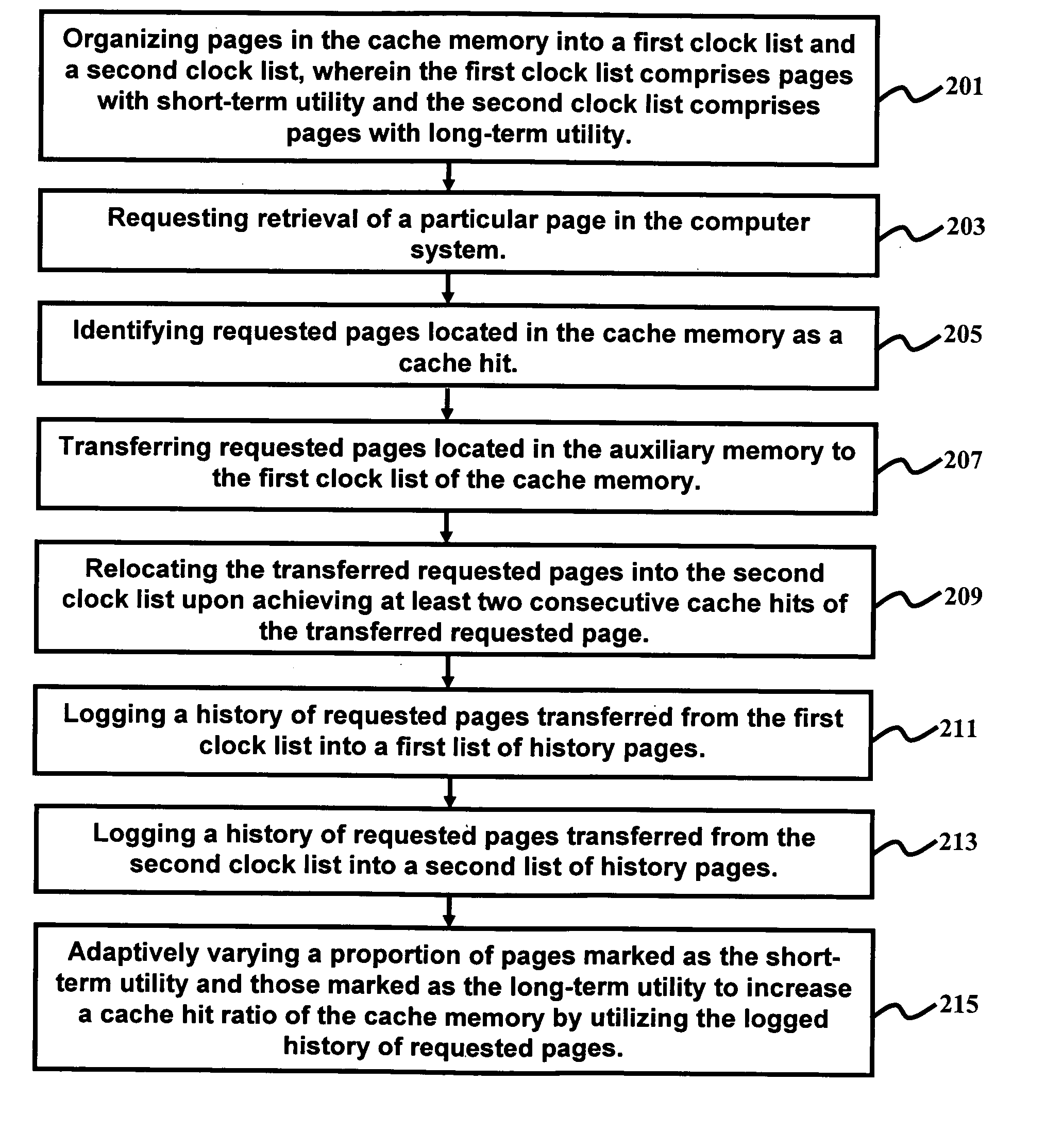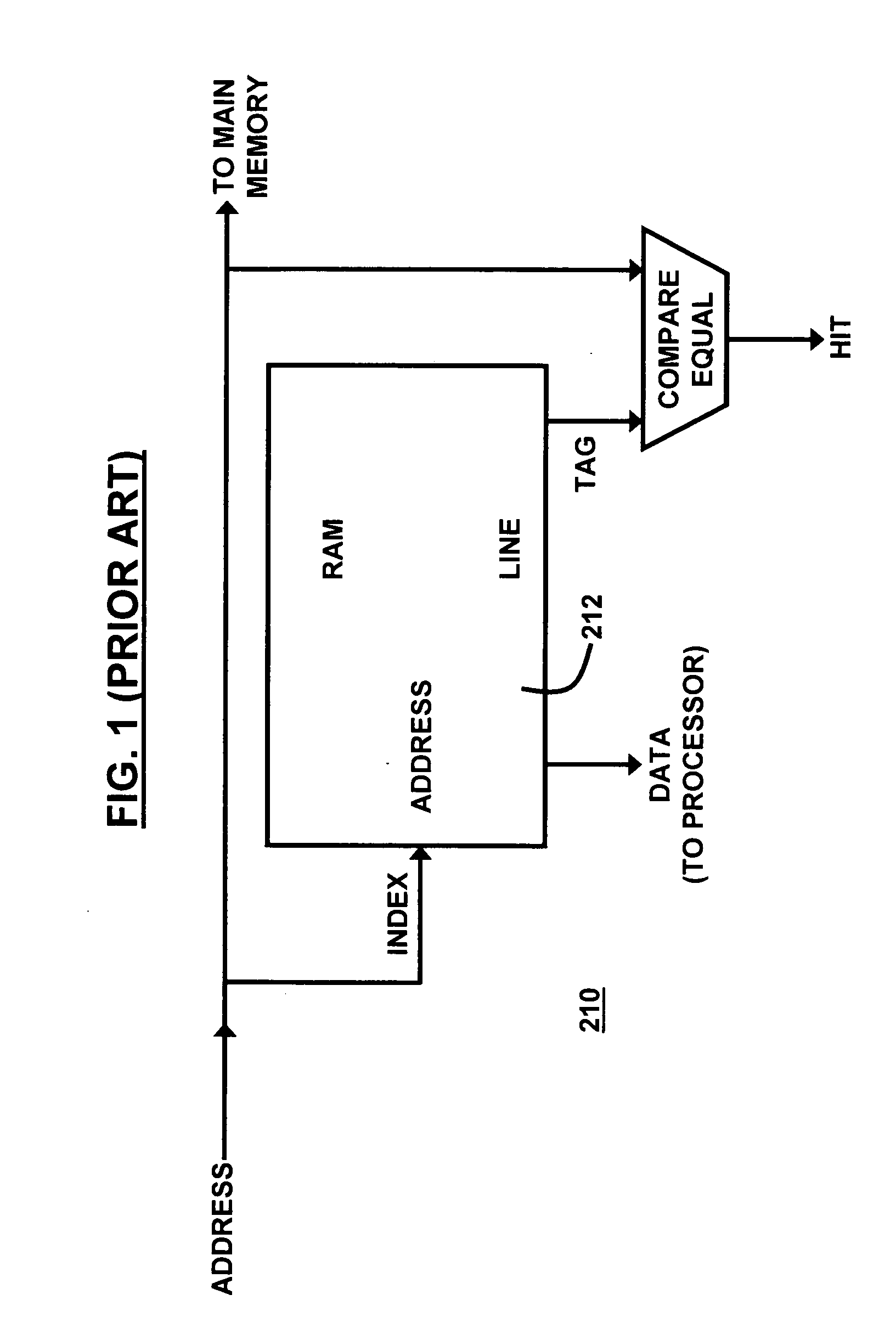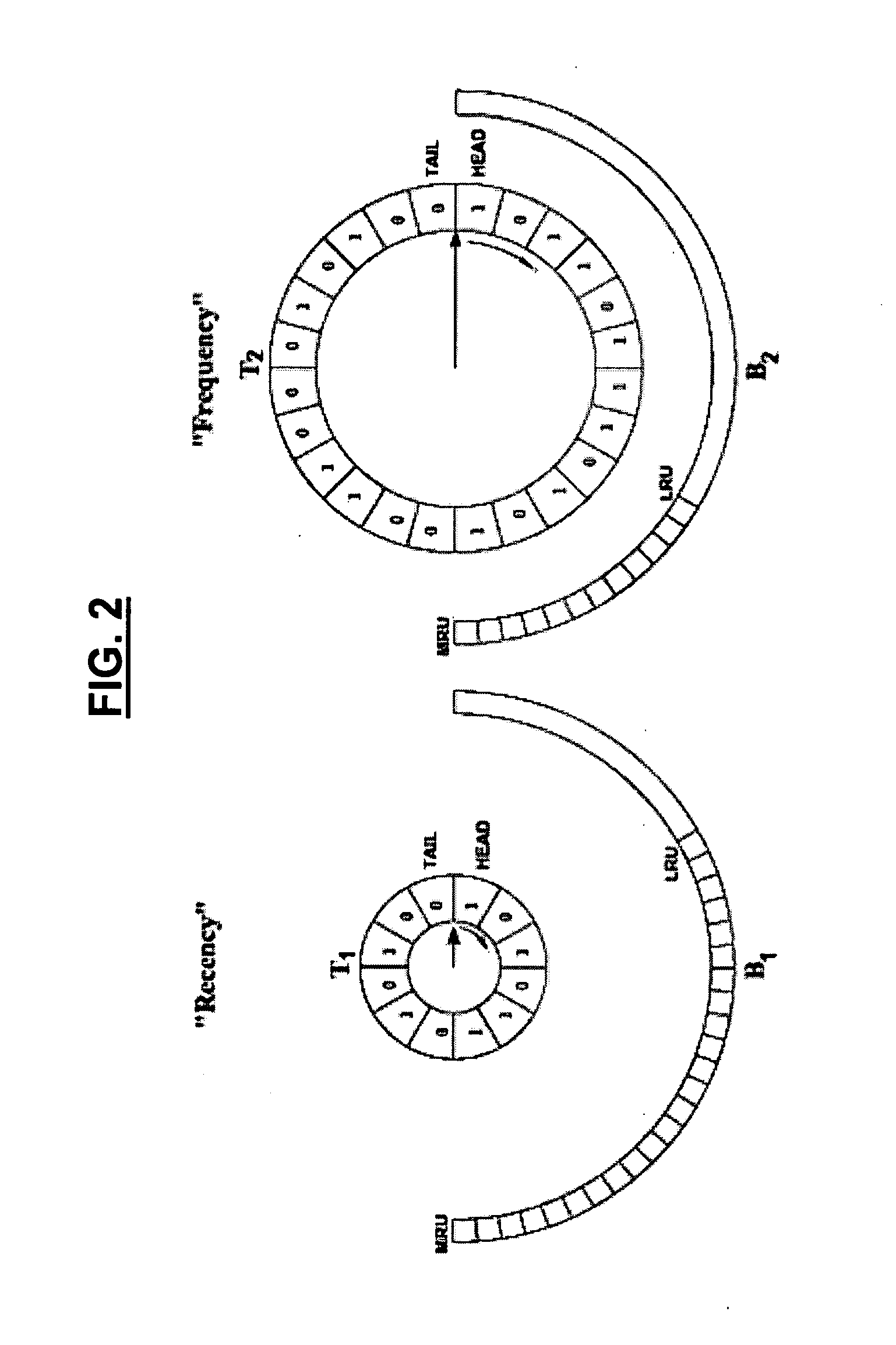Method and system of clock with adaptive cache replacement and temporal filtering
a technology of adaptive cache replacement and temporal filtering, applied in the field of cache operations, can solve the problems of fundamental cache problem, “cache hit”, “cache miss”, etc., and achieve the effect of high performance and a high-concurrency implementation
- Summary
- Abstract
- Description
- Claims
- Application Information
AI Technical Summary
Benefits of technology
Problems solved by technology
Method used
Image
Examples
first embodiment
[0062]FIG. 3 illustrates the CAR methodology according to the invention. Given that c denotes the cache size in pages, the CAR technique maintains four doubly linked lists: T1, T2, B1, and B2. The lists T1 and T2 contain the pages in cache, while the lists B1 and B2 maintain history information about the recently evicted pages. For each page in the cache, that is, in T1 or T2, a page reference bit is maintained that can be set to either one or zero. T10 denotes the pages in T1 with a page reference bit of zero and T11 denotes the pages in T1 with a page reference bit of one.
[0063] The four lists are defined as follows. Each page in T10 and each history page in B1 has either been requested exactly once since its most recent removal from T1∪T2∪B1∪B2 or it was requested only once (since inception) and was never removed from T1∪T2∪B1∪B2 . Each page in T11, each page in T2, and each history page in B2 has either been requested more than once since its most recent removal from T1∪T2∪B1∪B2...
second embodiment
[0080] A limitation of ARC is that two consecutive hits are used as a test to promote a page from “recency” or “short-term utility” to “frequency” or “long-term utility”. At an upper level of memory hierarchy, two or more successive references to the same page are often observed fairly quickly. Such quick successive hits are known as “correlated references” and are typically not a guarantee of long-term utility of pages, and, hence, such pages can cause cache pollution, thus reducing performance. As such, the embodiments of the invention solve this by providing the invention, namely CLOCK with Adaptive Replacement and Temporal Filtering (CART). The motivation behind CART is to create a temporal filter that imposes a more stringent test for promotion from “short-term utility” to “long-term utility”. The basic idea is to maintain a temporal locality window such that pages that are re-requested within the window are of short-term utility, whereas pages that are re-requested outside the...
PUM
 Login to View More
Login to View More Abstract
Description
Claims
Application Information
 Login to View More
Login to View More - R&D
- Intellectual Property
- Life Sciences
- Materials
- Tech Scout
- Unparalleled Data Quality
- Higher Quality Content
- 60% Fewer Hallucinations
Browse by: Latest US Patents, China's latest patents, Technical Efficacy Thesaurus, Application Domain, Technology Topic, Popular Technical Reports.
© 2025 PatSnap. All rights reserved.Legal|Privacy policy|Modern Slavery Act Transparency Statement|Sitemap|About US| Contact US: help@patsnap.com



